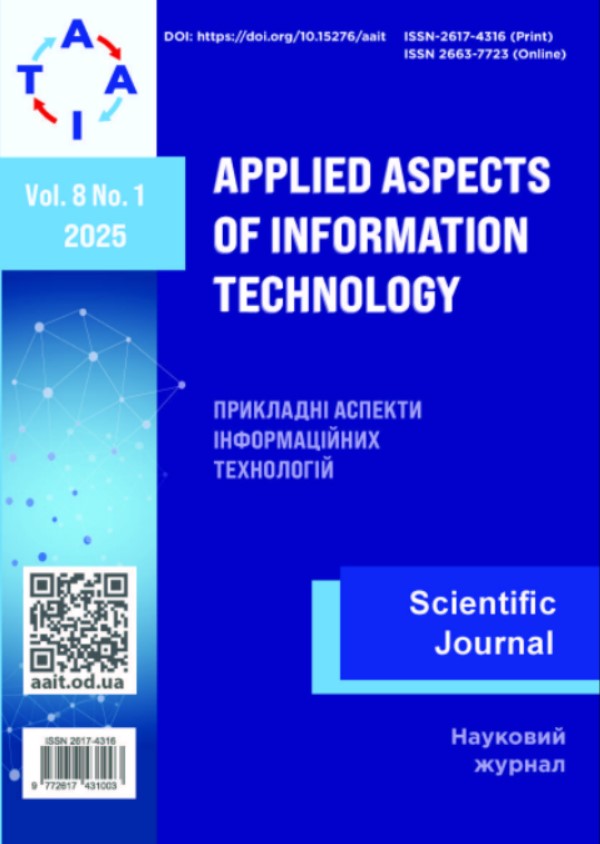Using complex-valued neural networks for aircraft identification
DOI:
https://doi.org/10.15276/aait.08.2025.3Keywords:
complex-valued networks, radar signals, aircraft recognition, phase analysis, aviation safety, object identificationAbstract
This paper presents an approach to aircraft recognition using complex-valued neural networks. The objective of the article is to study the effectiveness of complex-valued neural networks for aircraft identification tasks based on radar data, the efficiency evaluated based on criteria such as classification accuracy, robustness to noise interference, the ability to maintain high accuracy with limited training data, and an optimal trade-off between accuracy and computational complexity. The study focuses on aircraft identification using phase and amplitude characteristics of radar signals, which are essential for aviation security and airspace monitoring. The research method includes theoretical analysis, modeling, and experimental testing. The paper discusses the architectural features of artificial neural networks that utilize complex numbers for signal processing. This approach enables the incorporation of phase information, which significantly improves the accuracy of radar data analysis. The results confirm that complex-valued neural networks surpass traditional models in recognition accuracy. Specifically, the inclusion of the phase component provides an increase in accuracy by up to eight and a half percent. Additionally, complex-valued neural networks demonstrate high resistance to noise interference, maintaining classification accuracy of up to ninety-two and three-tenths percent even at a noise level of thirty percent. Despite these advantages, the primary limitation of complex-valued neural networks is their higher computational complexity compared to real-valued models. This requires significant resources for training and implementation, which can be a critical factor for applications where real-time signal processing speed is essential. The study also explores optimization possibilities for artificial neural networks by developing hybrid approaches that combine the strengths of different network types and by simplifying architectures without compromising accuracy. The findings indicate that artificial neural networks are an effective tool for aircraft classification, particularly in complex signal environments and conditions with noise interference. These networks have significant potential for widespread use in both military and civilian airspace monitoring systems, providing enhanced accuracy and reliability in recognition tasks. The results obtained in this study open new opportunities for advancing aviation security technologies and automating aircraft recognition systems.










